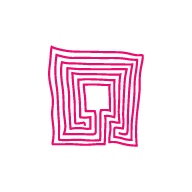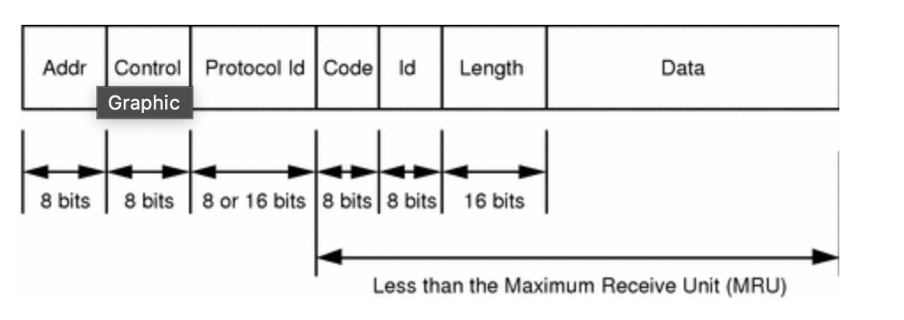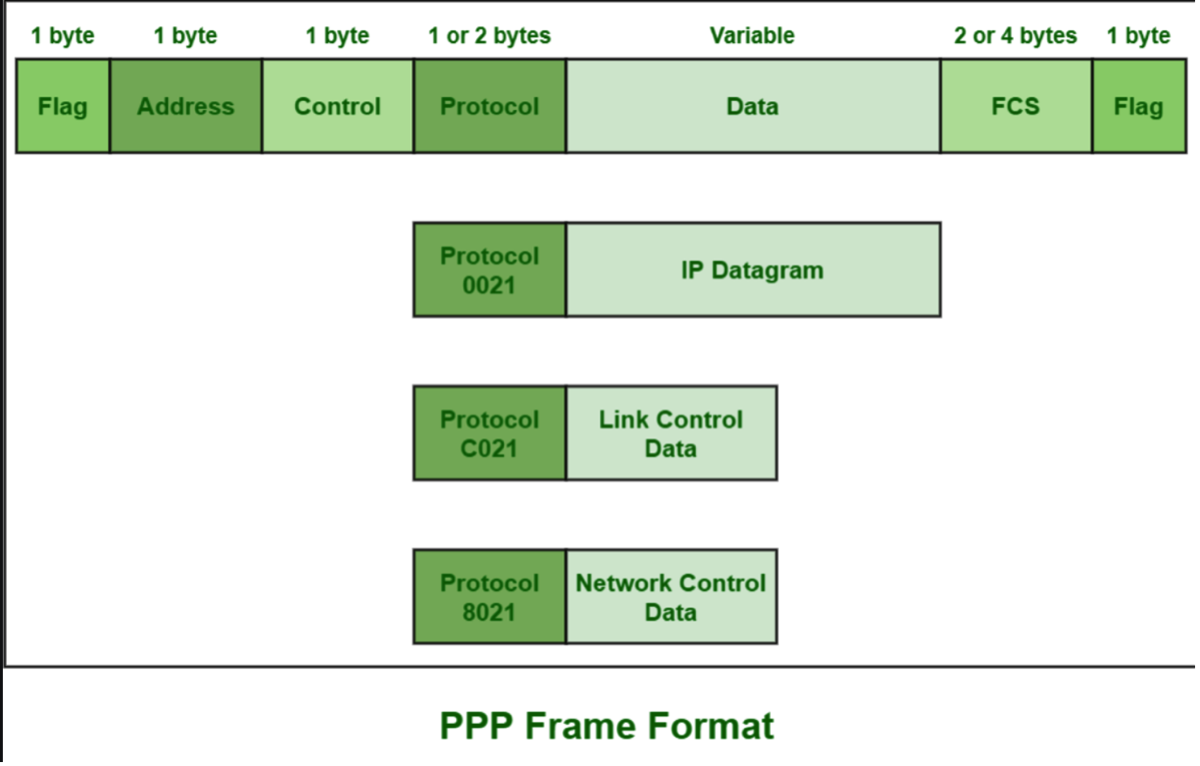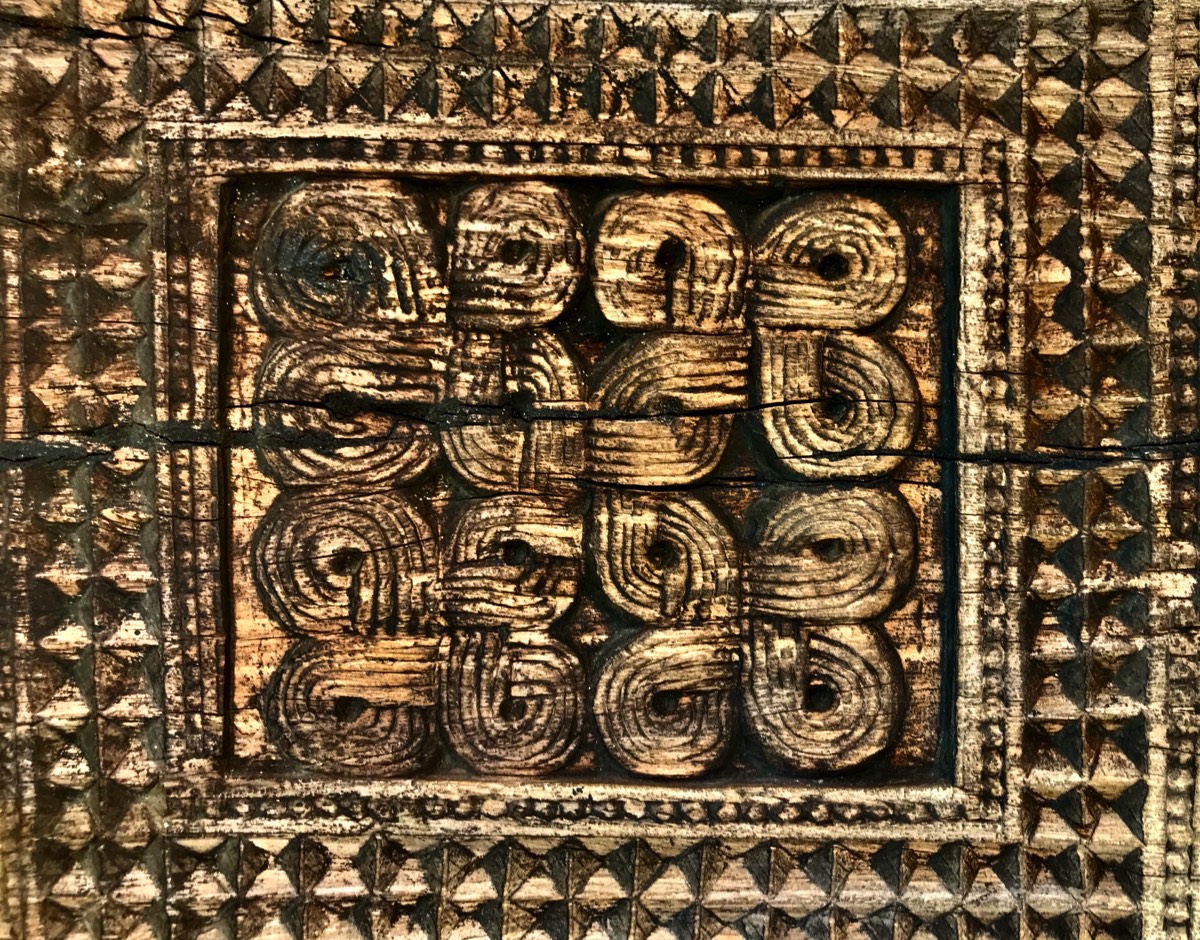
Consciousness
Preamble
In 1963, a chemist named Raphael Mechoulam working at Weizmann Institute of Science in Tel Aviv Israel identified the chemical composition in weed as cannabis (THC). In 1992 Mechoulam along with several colleagues isolated the chemical made by the human body that binds to the same receptor in the brain that THC does. Mechoulam named it Anandamide – from Sanskrit for “supreme joy”. When inquired as to the why Mechoulam named it in Sanskrit instead of Hebrew, Mechoulam’s reply was “Because in Hebrew there are not so many words for happiness”.
The issue of Mechoulam had was lack of vocabulary in the languages western civilization to express the most explanatory word to express his findings for others to understand. It is the same with the western concept of Consciousness. There are no proper words to express the many different findings relating to Consciousness in the West. It paved the way in the world for two concepts on Consciousness. The western world’s concept of Consciousness and the eastern world’s concept of Consciousness.
Concepts are difficult to understand because we are bought up by biased parents and society. For instance, Buddha is not a Buddhist. Jesus is not Christian. So is Aristotle who rejected anthropomorphic gods. But the influential part of our society especially the intelligentsias are influenced by atheist Aristotle for some reason. At birth we all were purposely made to accept and purposely conditioned from our childhood to one of these beliefs. And as children no child has ever had a choice. And divided we are. Intellectually and on religious beliefs.
The Choice
The world is divided into white man’s world and the rest. White man is a concept not a racist remark. White Man is the world of Aristotle’s philosophy. As if there are no other philosophies that existed in the world. For nearly 2000 common era, Christian believers were inspired to spread the message of salvation to the rest of the inhabitants of the world. So, they embarked on missionary missions of revealed religions to save the human species in other parts of the world. In the conquest there was no philosophy. It was only mission of exploitation and propagation. And when the times changed, they needed to be intellectuals. And the only intellectualism they had was spirit of Aristotle. So, Consciousness is not separate from the body became the basis of all conscious associated theories.
My Choice
I am not in an escapade to find or to give definitions to definitions of Consciousness in either of these two worldly conceptions. My endeavor is to convert human like thinking to be placed inside a machine with algorithms. It will compromise both digital and analog computing. My effort is to find a simple way to convert the human thinking process to algorithms. To do so there has to a principle and consistency. To achieve a consistency, I must distinguish common traits in human Consciousness and build the same in a machine. I call it “Machine Vipassana”. If you wonder why a Sanskrit word, It is the same reason Mechoulam to name “Anandamide”. Mechoulam inspired me to name human like Consciousness in machine as “Machine Vipassana”.
My definition of Consciousness is limited to converting human like Consciousness to machine Consciousness. Not human conscious in a machine. I am making the path and associating with only what is needed to create a humanlike Consciousness in a machine. All the other matters and concepts that do not fit in to is ignored or left behind.
When writing this concept I have detached my knowledge from social, political and religious beliefs ( I have non). In doing so I only believe in that world is an unjust place, don’t try to be the one to correct it or be opinionated by worldly affairs. More detached from the world, the more focused you are to clear thinking moments. Every word you read invokes a new thought process in you an extrovert mind. Machines are not extrovert. Nor should we. It is this thought process I intend to convert to Machine Vpassana. It’s about electrons reading electrons.
The Path
The Path In understanding the concept of Consciousness, the differences of philosophical opinions in East and West arose after the Aristotle’s four questions on identifying soul. Aristotle’s inquest of soul appears to be initial root of concept of Consciousness in western philosophy. I am not competent to nor possible to discuss the concepts of history of Consciousness. But there is a good article at “Stanford Encyclopedia of Philosophy” (Smith, Joel, "Self-Consciousness", The Stanford Encyclopedia of Philosophy (Summer 2020 Edition), Edward N. Zalta (ed.),
And western concept of Consciousness is also described in detail Van Gulick, Robert, "Consciousness", The Stanford Encyclopedia of Philosophy (Winter 2022 Edition), Edward N. Zalta & Uri Nodelman (eds.).
Those two articles give a good understanding of the western concepts of Consciousness. Western philosophy of Consciousness is not based on any identified concept, principle, or rational basis. So, western thinkers are eternally inventing so many new concepts which are not related to each other and ended with irreducible content. Example of such confused philosophy is Vitalism. Had Nalanda University in India was not been burned in the 12th century, we would have had a better world and better understanding of philosophy. The burning of Nalanda made all the codified Eastern knowledge to scatter to countryside. And thus, lack of written hierarchy in the knowledge compared to the flow of Aristotelian philosophy in the western Hampshire hampered populating Eastern Philosophy.
Western Philosophers cannot explain Consciousness due to lack of vocabulary in their languages. When there is dearth of vocabulary to express your knowledge and compel to use typical everyday language to describe Consciousness related knowledge it doesn’t carry the intended meaning. Therefore, no western Philosopher has been able to express clear definition of definitions as opposed to Eastern languages like Sanskrit and Pali. If we investigate the vocabulary in Sanskrit and Pali related to Consciousness, there are over 1000 words related to Consciousness but gives a different meaning of its state of Consciousness. With consistency in both Pali and Sanskrit. Each different word explains a different state of Consciousness. And every definition has a universal meaning. For instance, “Nirvana “is defined as “the state of liberation from cycle of birth and death”. All the other text associated with Nirvana is how to do it yourself (DIY). And “Moksha” is also defined as “the state of liberation from cycle of birth and death”. But the theory in achieving Nirvana and Moksha is vastly different. It paved the way to understand the concept of Consciousness in a reducible context to do it yourself. What is common to both concepts is the concept of Ahimsa.
In the eastern part of the world most primitive and simplest concept of philosophy is acceptance of right to life. Respect live things. Or Ahimsa not causing harm to “Prāna”. All “Prāna” is alive and has a right to live. And should not be harmed. What is not “Prāna” are all dead things and all materialistic things. Sanskrit and Pali Languages are highly advanced languages. It is almost the most supreme languages among humans. It has a word to define or understand complex meaning of any human concept to simpler more fundamental components. If we are to consider Sanskrit as reducible language, English language can be considered irreducible language.
Similarities
Consciousness in western word has become a hackneyed term. The qualia gap is unique to western philosophy. The qualia gap was explained about 3000 years ago in India by nonviolent major religious philosophies. The western world being scientific in understanding all the sciences has missed out important discoveries related to or similar to Eastern Worlds concept of Consciousness. The science of West calls it “Internet Protocol (IP) frames”. In the rush to distinguish sciences of various classes, western scientists have failed to account similarities in thought process and principles of “Internet Protocol (IP) frames”.
Internet Protocol (IP) frame Format

On this chart there are 8-bit or 16-bit data transmissions. Each bit takes 1 nano second to transmit form its origin to its destination. Each bit if it is negative to positive it is identified as a 0. If it is positive to negative it is identified as a 1. And it’s a signal created with electricity. There are 56 or 64 bites on this chart.
Internet uses following type of protocol for its data transmissions. And it is known as Point-to-Point Protocol (PPP) Frame Format. Which looks like this

In this PPP frame format various fields are known as (But you can skip this part)
1.Flag field – PPP frame similar to HDLC frame, always begins and ends with standard HDLC flag. It always has a value of 1 byte i.e., 01111110 binary value.
2.Address field – Address field is basically broadcast address. In this, all 1’s simply indicates that all of the stations are ready to accept frame. It has the value of 1 byte i.e., 11111111 binary value. PPP on the other hand, does not provide or assign individual station addresses.
3.Control field – This field basically uses format of U-frame i.e., Unnumbered frame in HDLC. In HDLC, control field is required for various purposes but in PPP, this field is set to 1 byte i.e., 00000011 binary value. This 1 byte is used for a connection-less data link.
4.Protocol field – This field basically identifies network protocol of the datagram. It usually identifies the kind of packet in the data field i.e., what exactly is being carried in data field. This field is of 1 or 2 bytes and helps in identifies the PDU (Protocol Data Unit) that is being encapsulated by the PPP frame.
5.Data field – It usually contains the upper layer datagram. Network layer datagram is particularly encapsulated in this field for regular PPP data frames. Length of this field is not constant rather it varies.
6.FCS field – This field usually contains checksum simply for identification of errors. It can be either 16 bits or 32 bits in size. It is also calculated over address, control, protocol, and even information fields. Characters are added to frame for control and handling of errors.
The Path
Above description is what science has invented similar to the workings of the mind or the Consciousness or Citta. And the most minute (heteronyms of irreducible language) part of this contraception works in nano seconds. That 1 billionth of a second. This the most minute man-made moment I found in science related to transmission of information.
(https://youtu.be/i8CmibhvZ0c?si=qSyxXIxjmyRLm035)
If we are to compare western internet protocol to Eastern ways of “running swiftly” - the mind of “Javanas”, the closest thing is the difference of nano second time it is explained. Instead of nano seconds a moment of thought process in broken down to nano nano seconds. That’s 1 in 3 trillionth part. And these thought moments parts again broken into 24 types. The reason to go into this detail is to explain the importance of the vocabulary used to identify such state of minds which are lacking in the English Language. And to understand that there are moments very much minute than a 1 nano second byte in an IP frame.
The Consciousness.
In the Buddhist philosophy thought process is explained in detail than in any other philosophy. Theoretically Buddhism is not a religion. It does not ask you to accept anything. The entirety of Buddhism is defined in two sentences. Think Good. Do good. This is all about Buddhism. The Knowledge in Buddhism is referred to Dharma or Damma and Abhidharma.
Dhamma is for the average humans, preached in common language to be understood easily. And Dhamma has a similar meaning as Dhamma referred to in other Indian nonviolent religions. Dhamma is about little things in life. As to why killing is bad, Elders should be expected, be humble in life, being truthful even at cost of one's own life is noble etc.
Abhidharma means paramartha. Paramartha means it will never change-Universal Truth. Change means a fetus becomes baby a child teenager becomes a man and a man becomes elderly. At all times the same body of person is identified by different names. But is the same person. Same person when the foam changes a different person. All these changed stages have different meanings at various stages. Water Fountain becomes a river. When River flows in to sea, it becomes ocean. But what was at the fountain and at sea are both waters. Still, it is not same water.
But parama artha definitions in Abhidhamma never changes it meaning. Prama Artha remains the same meaning at all times. The meanings of parama Artha is that it never changes and remains the same forever. And it can be understood with some effort. There is section in Abhidharma which teaches you on how be unbiased when acquiring knowledge. But I have not been able to gather any books on this subject. Only heard them in my native language Sinhala. And when I tried to access the books, the speakers referred to most of the terms are in pali. Bad luck for me and for you too.
Pramattha knowledge is not accessible to average human beings. It is understood only by Buddhas. Only a Buddha can explain paramartha knowledge to other humans. And Abhidharmaya is the only paramartha knowledge in the whole world. Because its definitions never change. And its knowledge is Universal. I don’t call it Universal Consciousness. The reason is, there so much addictive knowledge in Abhidharma, I am only eliciting what I need to create a Machine Consciousness. Not human Consciousness in a machine.
All the other knowledge forms and philosophies can change with the passing of time. But Abhidharma will not change. It’s the ultimate truth in the entire Universe. Made accessible to humans and aliens by a Buddha. At present times it was preached by Gautama Buddha upon understanding after attaining Buddhahood. The Abhidharma knowledge does not appear to a Buddha immediately upon attaining Buddhahood. It takes several weeks or months for this universal phenomena to be comprehend and organize it. Even for a Buddha, and thus, I have heard.
Patthana,
Abhidharma has a paramartha knowledge by the name of Patthana which – breaks down thought process continuously arising in a human mind - the Consciousness. This is the nano nano second process of categorization of thought process broken into single moments and each moment is identified and defined. Every change arising in our mind and body is explained in detail. Including physical and mental phenomena.
There is no other philosophy in the world which has identified and explained the physical and mental phenomena or the thought process or the Consciousness as in Buddhist Philosophy. The teachings are found in the Pali Canon. The contents are known as scriptures. In one of these scriptures name “Patthana Dharma” where the thought process is broken down to 24 instances. The idea of introducing “Patthana Dharma” is to show the richness of the Sanskrit/Pali vocabulary in understanding the thought process. Or the Consciousness. In “Patthana Dharma” it describes 24 states of mental phenomena or the thought process or the Consciousness. In the following “Paccayo” means mental conditions which forms the Consciousness.
1. Hetu paccayo, Root codition; -
“ Hetu, which can be translated as a “root,” is the factor that serves as the cause” Described as the conditioning force or, cause that takes place and is related to the six roots (sense faculties), rooted-Consciousness, mental factors, and rooted mind and rebirth related matter. The roots that are referred to as hetu are purely mental.
2. Arammana paccayo, Object condition;
relates to the role that external objects or internal mental states play in conditioning the arising of Consciousness and mental factors. It is the condition that dominates and controls all other conditions. It refers to the condition or cause of sense objects. It is the object that stimulates the sense organs and gives rise to sense Consciousness. In other words, it is the external stimuli that lead to the arising of mental states associated with the senses.
3. Adhipati paccayo, Predominance condition;
It is the condition that dominates and controls all other conditions in a conscious process. These adhipatis have control and influence over their respective mental processes and play a significant role in conditioning and directing the mind.
4. Anantara paccayo, Continuity condition;
It is explained as the conditioning without any gaps between conditioning states and conditioned states. refers to any state of Consciousness and the mental phenomenon associated with it, which act as a condition for the immediately following stage in the process of Consciousness. It signifies that there is a close and immediate relationship between these consecutive stages of Consciousness and their associated mental phenomena.
5. Samanantara paccayo, Contiguity Condition;
It explains the relationship between preceding mental phenomena and the arising of succeeding mental phenomena. According to this concept, as soon as one mental aggregate disappears, the next mental aggregate arises without any gap between them. This condition ensures the continuity of mental processes and the immediate succession of mental phenomena.
6. Sahajata paccayo, Mutuality condition;
highlights the idea of simultaneous arising or conascence of different mental aggregates or states. It signifies that these mental states and aggregates are born together and mutually conditioning each other for their simultaneous arising.
7. Annamanna Paccayo;
Mutuality Condition; This condition explores the phenomena of repetitive occurrences of mental and physical states. It states that certain states tend to repeat and arise together.
8. Nissaya paccayo, Dependence condition;
explores the interconnectedness and dependence of sensory experiences in human Consciousness. It refers to something on which something else, known as the “conditioned-thing” (paccayuppanna), depends or relies upon in order to exist. It is the cause or condition necessary for the conditioned thing to arise and be sustained. The Nissaya-paccayo plays a supportive role in the arising and continuation of phenomena.
9. Upanissaya paccayo, Strong dependence condition;
It is known as the condition where one mental state or phenomenon depends strongly on another for its arising or occurrence. It highlights the concept of strong dependence or reliance as a condition for the arising of different mental states and phenomena. It can also be seen as a support or conditioning factor that contributes to the manifestation and development of specific mental and behavioral qualities.
10. Purejata paccayo, Pre- nascence condition;
that arises beforehand and conditions its related conditioned states. Or the connection between the conditioning state and the conditioned state. It is the connection between the conditioning state and the conditioned state in the body or mental processes. It signifies that the conditioning state of dhammas or phenomena has arisen beforehand and conditions its related conditioned states. It is known as prenascence because it exists prior to the arising of the conditioned state. Purejäta paccayo can be found in various sensory experiences, such as the eye-sensitivity, ear-sensitivity, nose-sensitivity, tongue-sensitivity, body-sensitivity, and mind-sensitivity.
11. Pacchajata paccayo, Post nascence condition;
conditioning state that arises after the arising of a conditioned state or effect. It is a phenomenon where a succeeding conditioned state that arises later conditions the preceding conditioning state.
12. Asevana pacchajata, Repetition condition;
where a preceding conditioned state is repeatedly conditioned by a succeeding conditioned state. is also known as the force or conditioning of Repetition Condition.
13. Kamma paccayo, Kamma condition;
it is the condition in which volitional actions performed by an individual lead to their corresponding effects or outcomes.
14. Vipaka paccayo, Resultant condition;
the condition in which one result causes another result to arise. While strong causes producing results are apparent, the results that produce other results might not be immediately visible.
15. Ahara paccayo, Nutriment condition;
The nutriment or food that sustains and promotes the development of both physical and mental processes.
16. Indriya paccayo, Faculty condition;
emphasizes that the faculty conditioning states can only condition within their respective domains and cannot dominate or control beyond their specific areas. It refers to the dominant or controlling power of the faculties or sense organs.
17. Jhäna paccayo, Jhana condition;
Jhäna is divided into two types: samatha jhäna and vipassanä jhäna. Samatha jhäna focuses on achieving a calm and concentrated state of mind, while vipassanä jhäna emphasizes insight and wisdom.
18. Magga paccayo, Path condition;
the conditioning relationship between the path (magga) and the associated states (sampayutta) that arise together. In relation to the good and bad paths, and how they lead individuals to different realms or existences.
19. Sampayutta paccaya, Association condition;
It is one of the conditioning states that explains the relationship between different mental aggregates and states. four factors must be present: arising together, dissolving together, having the same object, and depending on the same base.
20. Vippayutta paccayo, Dissociation condition;
It is a condition where certain factors, such as arising together, dissolving together, having the same object, and depending on the same base, are not present. (without association and disassociation)
21. Atthi paccayo, Presence condition;
It is a conditioning state in which certain mental and physical phenomena exist mutually through the force of Sahajätatthi Paccayo (mutual), conditioning each other.
22. Natthi Paccayo, Absence condition;
refers to the causal relationship of states by way of absence. When the predecessor disappears, the successor comes into existence. This absence condition is similar to the disappearance of light resulting in darkness spreading.
23.Vigata paccayo, Disappearance condition;
The relationship between two phenomena when the absence or disappearance of one phenomenon causes the arising or presence of another phenomenon. The situation where the non-existence or end of a particular condition leads to the arising or presence of another condition. It explains how the absence of something can have an impact on the arising of another thing. When something disappears or dissolves, it no longer exists. Or something that was previously present or existing no longer remains.
24. Avigata paccayo, Non- disappearance condition;
It is described as the condition that arises when something does not disappear or dissolve and remains present. that serves as a condition for other phenomena to arise by not disappearing or remaining present. The concept of presence and non-disappearance. its conditioned state at the moment while it is still in the state of non-disappearance. Where something does not disappear or cease to exist.
"Patthana Dharma”
“Patthana Dharma” is not the only instance mental phenomena or the thought process or the Consciousness is explained in Buddhist philosophy. “Patthana Dharma” is only a part of major scripture titled as Abhidhamma. Abhidhamma means Interconnectedness of mind and matter. It breaks down conventional reality into the minute elements of ultimate realities and explains their characteristics, functions, manifestations, and causes of Consciousness.
9 minutes
To make this article more interesting the Pali Scriptures state that Gautham Buddha (the singularity of the universe) did not preached Abhidhamma to humans. It was preached to aliens in a faraway place from Earth over a period of 9 minutes. And these 9 minutes of Earth time in heavenly body was equivalent to 90 days of time on Earth. It was not preached to humans because of the impossibility of humans to listen continuously and remain in one posture for 90 days. And the scriptures state even for a Buddha it is impossible to be in heaven continuously for 90 days. Because the Gautham Buddha is human. So how the Gautham Buddha performed this feat one must read the scriptures to find out.
Consciousness as a thought moment in the context of Abhidhamma refers to “arising” , “develops” and “ceases”. In fixed order. Every thought moment occurs resulting in a continuous flow of consciousness without interruption. A thought moment or Consciousness is refers to as “Citta” in Pali. Citta and Consciousness have the same meaning. Every 24 paccayo referred to above are categories or types of “Citta”, pronounced as “sith”.
The rapidity of the succession of thought moments Citta is hardly conceivable by the mundane human mind. It is said that within the brief duration of a flash of lightning or the twinkling of an eye, billions of thought moments may arise and pass away.
In the book titled “Process of Consciousness and Matter by Bhaddanta Dr. Rewata Dhamma” at page 38, duration of a Consciousness moment explained as-
“The Life-Time of Citta"
Citta (consciousness) arises and dissolves in a person at a tremendous rate of more than a thousand billion times per eye-wink and there are about 250 eye-winks in a second. So, the life-time of a citta is less than one-thousand billionth of a second. “ “The life-time or duration of a citta is measured by three short instants, characterising the distinct features in the arising and passing of the citta. These are: (i) uppāda- the arising instant, (ii) ṭhiti- the presence or existing instant and (iii) bhanga- the dissolving instant. These three short instants (khaṇas) are said to be “one moment of consciousness” or “one conscious moment” (cittakkhaṇa). So, the lifetime of a Citta is equal to the three short instants of arising, existing and dissolving of Citta, i.e. it is equal to one conscious moment (cittakkhaṇa)”. (cittakkhaṇa is pronounced as chith+thak+ shana). “*
Of all the books I have referring to I picked this book since it serves as supplement to Venerable “Bhikku Bodhi” born Jeffrey Block, is an American Theravada Buddhist monk ordained in Sri Lanka, the author of “A Comprehensive Manual of Abhidhamma”. He presently lives and teaches at the Chuang Yen Monastery Carmel, New York. So if any interested person can have easy access to Bhikkhu Bodhi for more insight into Consciousness. Bhikkhu Bodhi is one of the few remaining of his kind and very rare too. He is very conversant in Abhidhamma studies.
My Personal Opinion,
The categories of Consciousness referred to above the 24 Pattana Paccayo is again subdivided into various categories. I do not wish to go into the details of those. But the important aspect is all those Consciousness moments or life-time of a citta is less than one-thousand billionth of a second. This is similar to Internet Protocols. Which I am interested in replicating in a machine.
The reason Abhidhamma has not made head way into western philosophy, my belief is association of suffering with Buddhism. There is no suffering explained in Buddhism. The word suffering is introduced by the preachers over a long period of time. For instance, in almost all the books on Abhidhamma they speak of birth, existence and death. And state the said three states denote impermanent state of life which is suffering. Abhidarma is the ultimate definition the fundamentals of life. And in such context common grievances or petty things couldn’t be entertained. Abhidarma was preached to life forms who has no suffering technically. The Aliens who the books refer to as Devatha or Gods. It is said there are over 32 million Gods exits in India and Sri Lanka. And Abhidarmma was preached to Gods who are superior to these common Gods.
If I get to party, clubbing , do boating and all other vices in life what am I to complain or understand of the suffering ? I have non to complain. And Abhidhamma is not for the commoners. It is for individuals with higher understanding of himself. And loving kindness is the foundation of Buddhism. Because as go along if don’t have loving kindness one could have false sense of superiority above others. Which the Buddhist philosophy is not. Buddhist Philosophy is more racist than white supremacy for some. But as you go along loving kindness helps one to understand it is not. Certain categories of people are not capable of understanding certain principles of Buddhism in their present life if they are born with some disabilities. Only a perfect human being can understand the pure principles of Buddhism.
The suffering associated with Buddhism is not the suffering of common populace. I don’t call it a suffering at all. The theory is when one fully master’s the thought process of Consciousness or Citta, such one would be able to see the thought process as it occurs in every one billionth of a second. The consciousness freezes. It’s like Neo in Matrix or Dr. Strange a little bit. Once a person gets to experience such state of Consciousness the next realisation is the complete control and knowledge of his own thought process or Citta. In such situations the knowledge one gains will give an understanding of life itself.
For the commoners to fulfil this realm of Citta or Consciousness by giving up on many physiological traits is arduous. That is suffering. It for the commoners the “Bana” or Dharma talks are mainly focused at. To attain certain knowledge levels a person should learn to take control of his mind. The disciplined involved requires lot of sacrifice of wants and needs of a person.
But it is not applicable to all the humans. There are a few who will understand without any arduous effort and keep the knowledge to themselves. Buddhist philosophy is not for all. But it tells have loving-kindness to all life forms equally. Buddhism philosophy teaches what is to be ignored in achieving full knowledge and control of one Consciousness.
I am in the process of writing the algorithmic concepts to be used in my attempt to introduce new concept of Machine Consciousness. What I intend to do is to make use of some selected concepts of Pattana Paccayo to be converted to dynamic algorithms and read and count the flow of electrons. Effort is to create a continuous process of reading or analysing the flow of electrons without seeking perfection or an absolute by ignoring imperfections.
Aspirations
My next intended article will compare general principles outlined by Bernard J. Baars “on Consciousness”, Jeff Hawkins “A Thousand Brains”, Anil Seth “30-Second Brain”, Marvin Minsky “Emotion Machine”, Frank Rosenblatt “Principles of Nurodynamcs: Perception and the Theory of Brain Mechanisms”. “Unlimited Associative Learning” and “Picturing the Mind” by Ava Jablonka and Simon Ginsberg, “Silicon” by Federico Faggin and “Shinning Light Transcendence” by Peter Fenwick. Will take some effort.
And it is they who inspired me to write this article. They all have different theories on Consciousness. There is little resemblance between Peter Fenwick and Federico Faggins spiritual afflictions. Dr. Fenwicks near death scenarios are amply documented in Buddhist scriptures. And the moment of death – the consciousness of dying is called “Cuti-Citta” (pronounced as chuti sita). It means the exit of Consciousness from the person. And this Cuti Citta said to be compromised of nine sub divided Cittas or 9 types of consciousness are encompassed in Cuti Citta.
May you all be happy. And live long. – all this in one word - Ayubowan.
Pinsith A. Perera
References
Process of Consciousness and Matter, Dr. Rewata Dhamma (PDF)
GENERAL REMARKS 41. 2. THE PENTAD OF SENSE-CONTACT 53. 3. THE FACTORS OF ABSORPTION
A comprehensive Manual Of Abhidrama
http://www.abhidhamma.com
Dhamma Theory, Philosophical Cornerstone of the Abhidhamma, Y. Karunadasa: The Dhamma Theory Philosophical Cornerstone of the Abhidhamma by Y. Karunadasa BPS (1996), Wheel No. 412/413 BPS Online Edition (2007)](http://www.abhidhamma.com)
Paṭṭhāna and Vipassanā, Ashin Kuṇḍalābhivaṃsa (16 PDF's): A series of 16 booklets on the 24 conditions (paccayas) and their practical understanding in daily life and Vipassanā meditation. Ashin Kuṇḍalābhivaṃsa, Saddhammaraṃsī Yeiktha Sayadaw. Yangon, Myanmar 2008 - 2012. Translation of the Sayadaw's Dhammatalks in Burmese into English by Daw Than Than Nyein. 1.Hetu Paccayo 2.Ārammaṇa Paccayo 3.Adhipati Paccayo 4.Anantara Paccayo (there is no separate booklet for Samanantara) 5.Sahajāta + Aññamañña Paccayo 6.Nissaya Paccayo 7.Upanissaya Paccayo 8.Purejāta Paccayo 9.Pacchājāta + Āsevana Paccayo 10.Kamma + Vipāka Paccayo 11.Āhāra + Indriya Paccayo 12.Jhāna Paccayo 13.Magga Paccayo 14.Sampayutta + Vippayutta Paccayo 15.Atthi Paccayo 16.Similarities in Atthi Paccayo and Avigata Paccayo
PS
(I have read some books and papers of , Bernard J. Baars “on Consciousness”, Jeff Hawkins “A Thousand Brains”, Anil Seth “30-Second Brain”, Marvin Minsky “Emotion Machine”, Frank Rosenblatt “Principles of Nurodynamcs: Perception and the Theory of Brain Mechanisms”, “Unlimited Associative Learning”, The Evolution of the Sensitive Soul: Learning and the Origins of Consciousness , Picturing the Mind: Consciousness through the Lens of Evolution by Eva Jablonka and Simon Ginsberg.
Silicon: From the Invention of the Microprocessor to the New Science of Consciousness by Fedrico Fraggin,
Artificial Intelligence Versus Natural Intelligence by Roger Penrose (Author), Emanuele Severino (Author), Fabio Scardigli (Author, Editor), Ines Testoni (Author), Giuseppe Vitiello (Author), Giacomo Mauro D'Ariano (Author), Federico Faggin (Author)
Shining Light on Transcendence: The unconventional journey of a Neuroscientist by Peter Fenwick
The Language Instinct: How The Mind Creates Language by Steven Pinker
The Blank Slate: The Modern Denial of Human Nature by Steven Pinker
The Giant Black Book of Computer Viruses
Pathology of Computer Viruses David Ferbrache
A Short Course on Computer Viruses by Cohen, Frederick B.
But I am not in agreement with them regarding the interpretation of consciousness. Their explanations on how the brain functions, should not have been the focus to understand consciousness. Consciousness differs from biology. It’s the process of humongous amounts of moments every second that arise in us and fades every mill second of which we comprehend only a selected few. If they are correct about existing theories about brain and consciousness, then are we to assume new-born and dementia afflicted individuals differ and have different level of consciousness? Mental disorders and physical disabilities are different from the consciousness we are discussing here. Brain, Mind are not associated with the consciousness, or the Algorithmic Phenomenon discussed here. Brain, Mind, Neurons are alien to consciousness. They are just biological organs which facilitate thought process. Consciousness is continuity of thought process. When brain, Mind, neurons are defective it hinders expression of thought process. And people have difficulties in expressing themselves and cause physical disabilities of various types. Even with such physical disabilities short comings, thought process and consciousness still exists in individuals. Such process exits independent of biological organs. Though person is physically disabled but alive. Every living human has a consciousness. What differ individuals from each other is their ability to understand moments as described above. Everyone interprets their consciousness in its own unique way. How one control and interpret one’s own consciousness is the difference that make each one to differentiate each other. Not the organs in the body.)
Pinsith A. Perera
pinsith@pinsith.com
05-01-2024
Ananda Buddhi AI
Ananda means the end of achievement. Maybe the path leading to the end of the achievement. To achieve Ananda in Artificial Intelligence one has to replicate Human Consciousness. Human consciousness is a remote subject to the Science of the West. But not in Asia. And especially to the Indian Sub-Continent. Where for millennia the mind has been searched and grasped by many and concepts galore. More than one could learn in many life times. If many lifetimes is alien, then come over here and sit by us. `


Maybe
For several sets of consciousness to work in unison it should have the ability to control its surroundings.
Control is operating an instrument based on pre recognised conditions and or parameters learned or exist from previous state of memory or memories.
Control can be controlled by increasing the desired level of data of awareness provided to the consciousness.
In creating artificial intelligence in computers, the most basic awareness to a computer is to make it understand of itself.
It will need massive mw power computer to just learn ms dos and its hardware and replicate it inside itself.
What is Mind
We think we do not know because its inside Us. Leave aside the concept of Mind but the heart, which beats all the time from birth to death. But heart is never seen by its owner. They see others hearts but not theirs. No one has ever seen one's own heart. Absolutely No One. Coding a Conscious with algorithms is like drawing ones own heart. It may be possible to draw a heart. But never replicate its originality. Even in shape or size. It’s like the assumption to create 1000 Brains. In the end there won't be 1000 brains but 1001 internet protocol addresses.
One system replicating another may be beginning of artificial life of artificial consciousness. Consciousness is to grow.
Consciousness is a verb invented by the humans to describe human grasps. And when human is to force its grasps on a machine to mirror its grasps we have coined the the term artificial intelligence. How correct we in this can be measured by the successful demonstration of such Consciousness in a machine.
Basic instinct of life is to propagation of self to too many. Not sex. Sex is only an instrument of achievement to propagate. When a consciousness arises its main intention is to take control of its self. A child's inability to control its self and adults control of self is the best example of this.
If a consciousness is to be artificially created then it must learn about it self. It must be able to improve itself. Improvise its code. Learn about its space. It's basic and and advance input output methods. Means of communication and adaptation in its environment will be crucial for it to have an independent consciousness.
When such is possible then the next stage is propagate self to another machine. It will be first birth of machine.
Brain is not built on specific principles. Computers are built to carry out specific computations. What if we create unspecified code to be unspecific computational output.
Misconception
The primate has four inputs. Eye, Ear, Nose and Sense of the Skin (touch is a singularity. Skin has many sensitivities – touch, pressure, thermal). Of which we have advanced in replicating vision to an extent not knowing the working of the Eye. Not knowing the basic function of the Eye. Basic function of the Eye is to detect Colour. Instead, present day traditional AI is focused on identifying colours of an image. No image, no colour. The main function of the Eye is to identify Colour. Independent of an image. It is not the Neural Networks or the Neuron of Heinrich Wilhelm. Redefining re-inventing yet not Neuron.


Eye of an Algorithm
To detect – Colour – Distance – Dimension – Image. Nontraditional four algorithms, the abstract. Consciousness of an Eye. Simplified complexity for not believing Aristotle in 322BC.